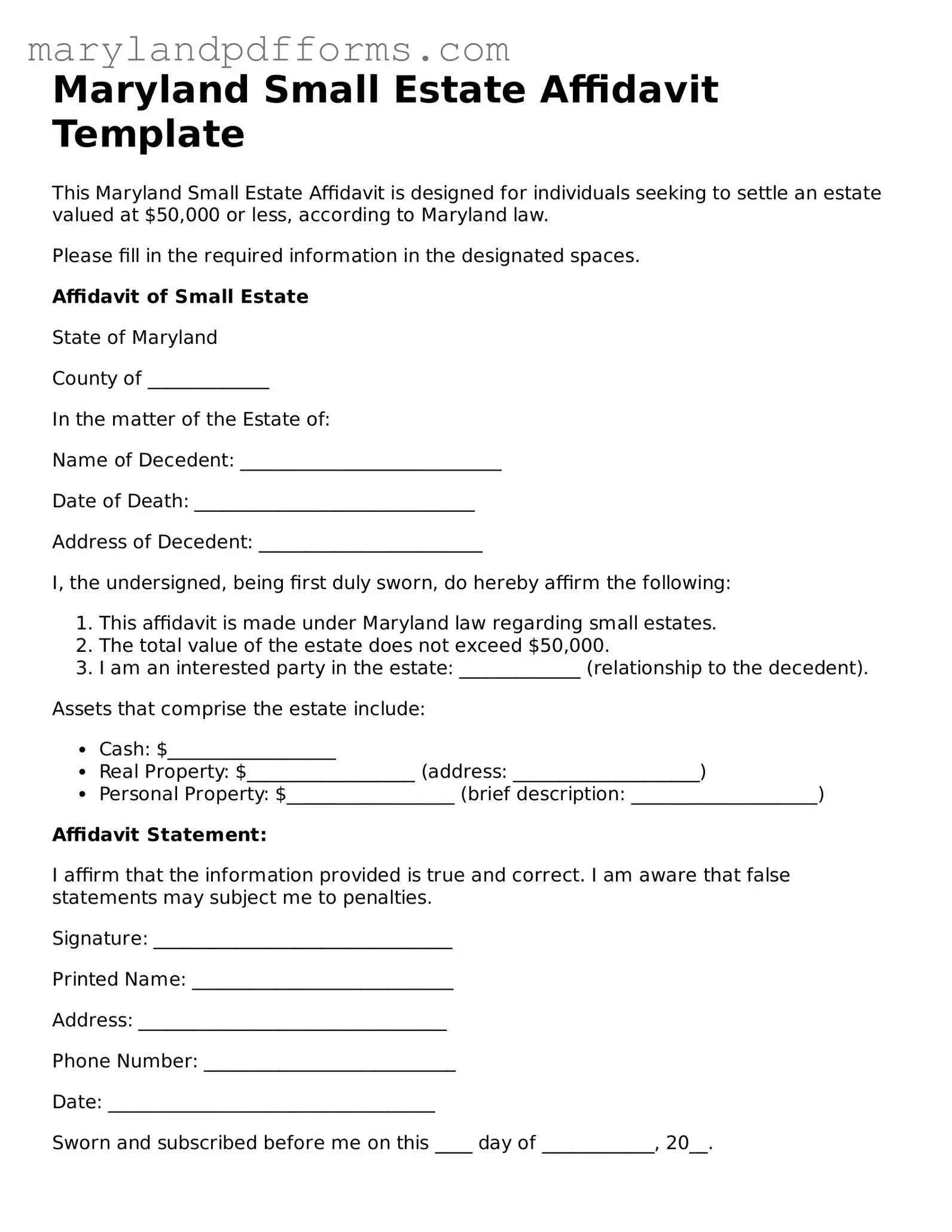What is a Maryland Small Estate Affidavit?
The Maryland Small Estate Affidavit is a legal document that allows individuals to settle the estate of a deceased person without going through the lengthy and often costly probate process. This form can be used when the total value of the estate is below a certain threshold, which is currently set at $50,000 for personal property and $100,000 for real property. By using this affidavit, heirs can claim the deceased's assets more quickly and efficiently.
Who is eligible to use the Small Estate Affidavit?
To qualify for the Small Estate Affidavit, the following conditions must be met:
-
The total value of the estate must be below the specified limits ($50,000 for personal property and $100,000 for real property).
-
The deceased must have passed away without a will (intestate) or left a will that does not require formal probate.
-
The person filing the affidavit must be an eligible heir or a person entitled to inherit under Maryland law.
How do I complete the Small Estate Affidavit?
Completing the Small Estate Affidavit involves several steps:
-
Gather necessary information about the deceased, including their full name, date of death, and details about their assets.
-
Obtain the Small Estate Affidavit form from the Maryland State Court website or your local court.
-
Fill out the form accurately, ensuring all required information is included.
-
Sign the affidavit in front of a notary public, as notarization is required for the document to be valid.
What assets can be claimed using the Small Estate Affidavit?
The Small Estate Affidavit can be used to claim various types of assets, including:
-
Bank accounts
-
Personal property such as vehicles, jewelry, and furniture
-
Stocks and bonds
-
Real estate, provided it falls within the value limits
However, certain assets, such as those held in a trust or life insurance policies with designated beneficiaries, may not be included in the affidavit process.
Is there a deadline for filing the Small Estate Affidavit?
While there is no strict deadline for filing the Small Estate Affidavit, it is advisable to do so as soon as possible after the death of the individual. Delaying the process can complicate matters and may lead to issues with asset distribution. Additionally, creditors may have a limited time to make claims against the estate, so prompt action can help protect the interests of the heirs.
Can I seek legal assistance when filing the Small Estate Affidavit?
Yes, seeking legal assistance is often a wise decision when dealing with estate matters. An attorney can help ensure that the Small Estate Affidavit is completed accurately and in compliance with Maryland law. They can also provide guidance on any specific circumstances that may arise, such as disputes among heirs or the need for additional documentation. While legal fees may be an added expense, the benefits of having professional support can outweigh the costs, especially in complex situations.
